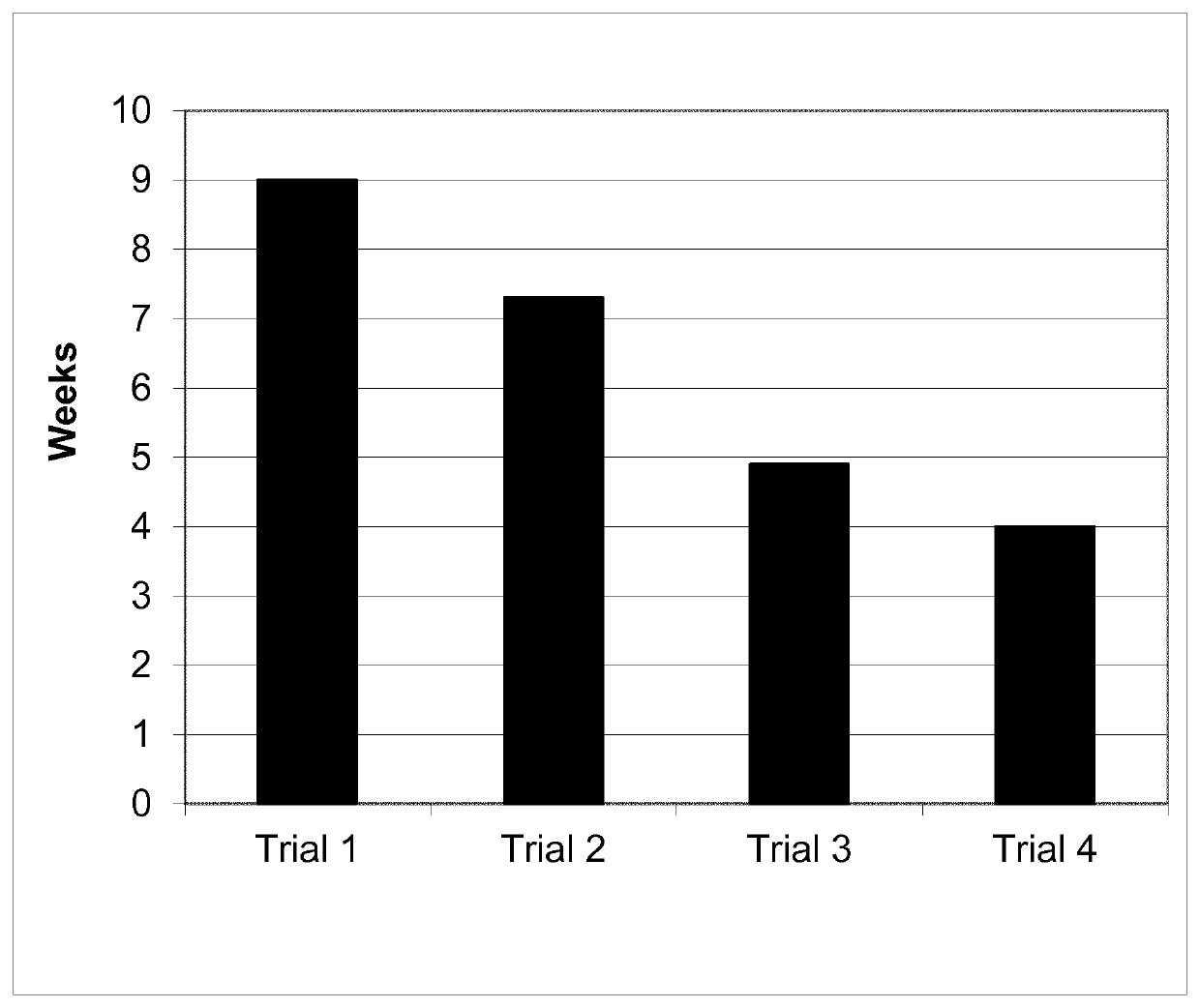Composition for dressing cutaneous lesions and manufacturing method thereof
a technology for lesions and cutaneous lesions, applied in the field of composition for lesions dressing, can solve the problems of expensive photosensitizers, long distances for patients to reach the sparsely distributed centers with cl treatment know-how, and increased labor intensity
- Summary
- Abstract
- Description
- Claims
- Application Information
AI Technical Summary
Problems solved by technology
Method used
Image
Examples
example 1
n of Chlorate-Free Chlorite From Chlorine Dioxide
[0046]The production of chlorine (Cl2) free chlorine dioxide gas is well known to an expert in this field. The process of producing chlorate free (2CO3.3H2O2), which is water soluble up to 13 g %, the solution absorbs the 20 fold amount of the chlorine dioxide gas in comparison to its physical solubility (2,900 ppm). In contrast to chlorite which has to be strongly acidified (pH 2 is released again at low proton concentrations of a pH 5 the slightly acidic pH of the skin. To guarantee a shelf life of three years, the final solution should have a pH from 10 to 12 and should be kept in the dark. To obtain a chlorite solution, which is not only virtually free of chloride using chlorine free chlorine dioxide gas but also of chlorate the following procedure was chosen:[0047]1. 30 g of carbonate peroxide (2 Na2CO3.3H2O2) are dissolved in 1 liter of demineralized sterile water.[0048]2. Chlorine-gas-free chlorine dioxide gas is freshly produc...
example 2
[0056]250 g of 1,2 Propyleneglycol (EU pharmacopeia quality) were transferred to the chamber of a mixer for semi-solid formulations to be stirred under vacuum and the surface was covered with:[0057]60.0 g of Hydroxypropylcellulose (Klucel GF)[0058]6.0 g of Gummi Arabicum (Efficacia XE) and[0059]6.0 g of Kolliphor407.
[0060]678.0 g of sterile water were added, which contained 10 g of a 9% (as measured by ion exchange liquid chromatography) solution of sodium chlorite produced in a chlorate-free manner. The mixer container was closed and stirred for 1.5 minutes at the setting 5 under a vacuum of 100 mbar. The composition obtained as a gel was then transferred to sterile calibrated containers or tubes to be finally used by subjects suffering from cutaneous lesions.
example 3
[0061]250 g of 1,2-propylene glycol (EU pharmacopeia quality) were transferred to the chamber of a mixer for semi-solid formulations to be stirred under vacuum and the surface was covered with:[0062]60.0 g of Hydroxypropylcellulose (Klucel GF)[0063]10.0 g of Gelatine Type B dissolved in 16 g of sterile water at 500 C and[0064]10.0 g of Kolliphor 407.
[0065]664.0 g of sterile water were added, which contained 10 g of a 9% solution of sodium chlorite produced in a chlorate free manner. The mixer container was closed and stirred for 1.5 minutes at the setting 5 under a vacuum of 100 mbar. The composition obtained as a gel was then transferred to sterile calibrated containers or tubes to be finally used by the subjects suffering from cutaneous lesions.
PUM
| Property | Measurement | Unit |
|---|---|---|
| weight percent | aaaaa | aaaaa |
| temperature | aaaaa | aaaaa |
| viscosity | aaaaa | aaaaa |
Abstract
Description
Claims
Application Information
 Login to View More
Login to View More - R&D
- Intellectual Property
- Life Sciences
- Materials
- Tech Scout
- Unparalleled Data Quality
- Higher Quality Content
- 60% Fewer Hallucinations
Browse by: Latest US Patents, China's latest patents, Technical Efficacy Thesaurus, Application Domain, Technology Topic, Popular Technical Reports.
© 2025 PatSnap. All rights reserved.Legal|Privacy policy|Modern Slavery Act Transparency Statement|Sitemap|About US| Contact US: help@patsnap.com

